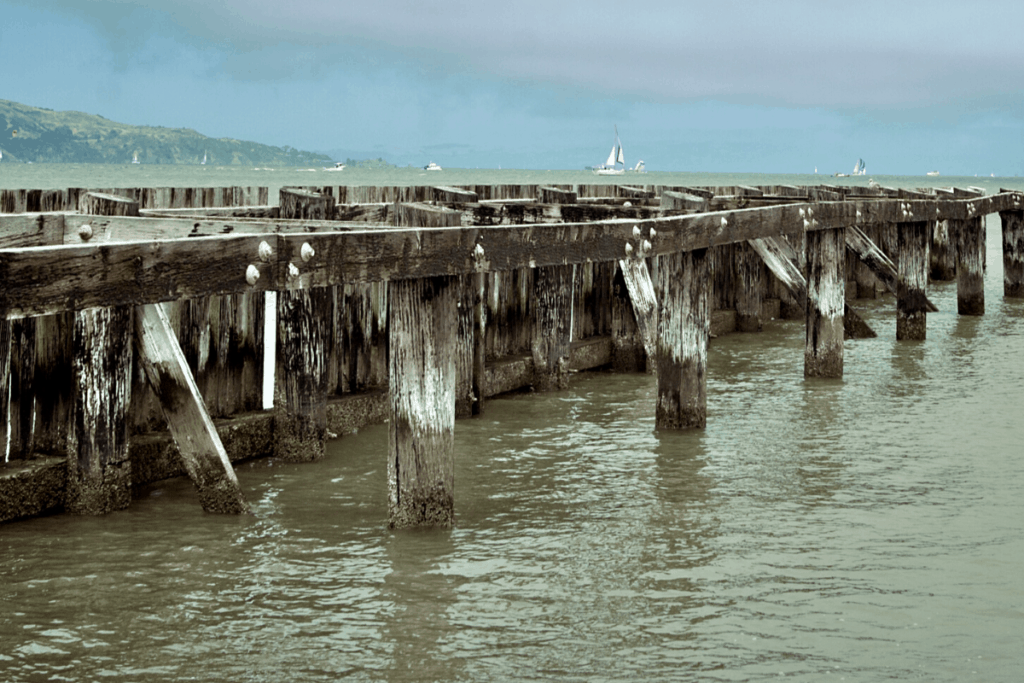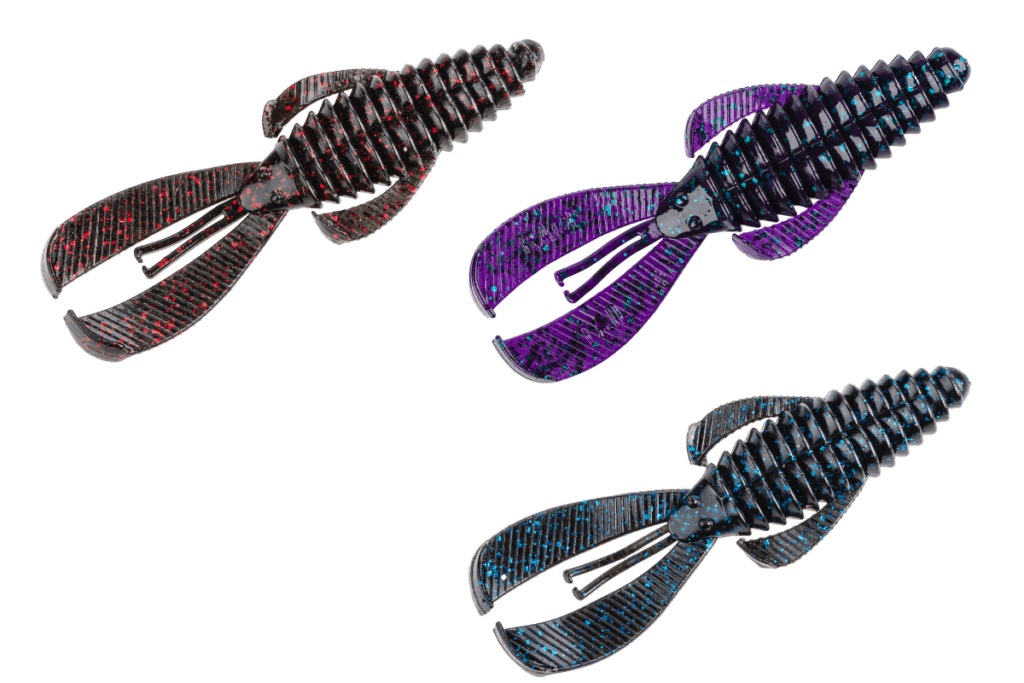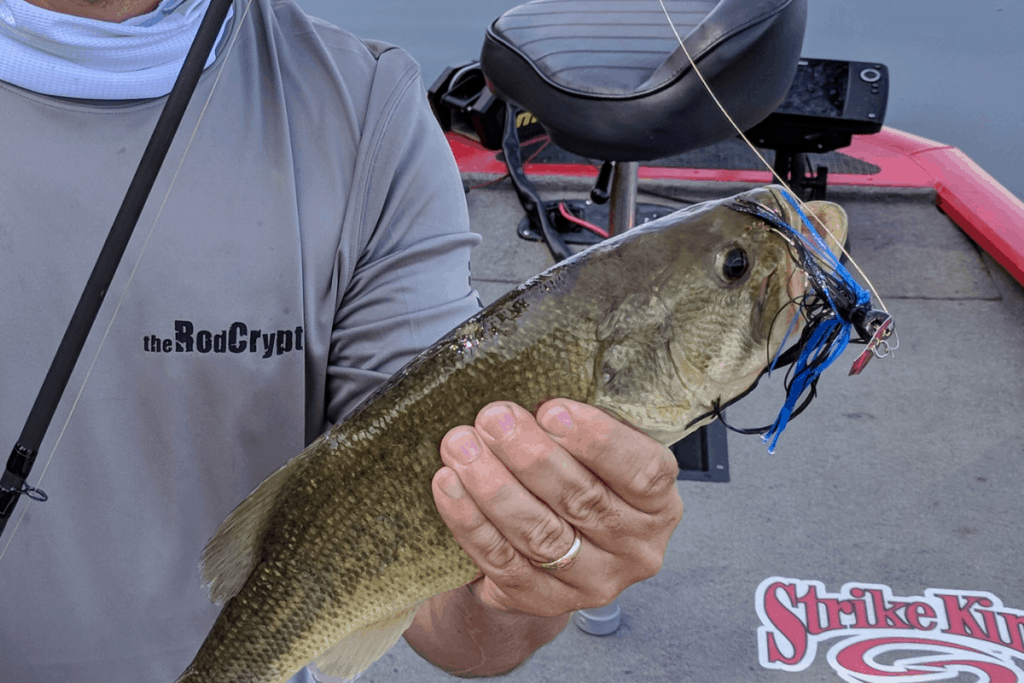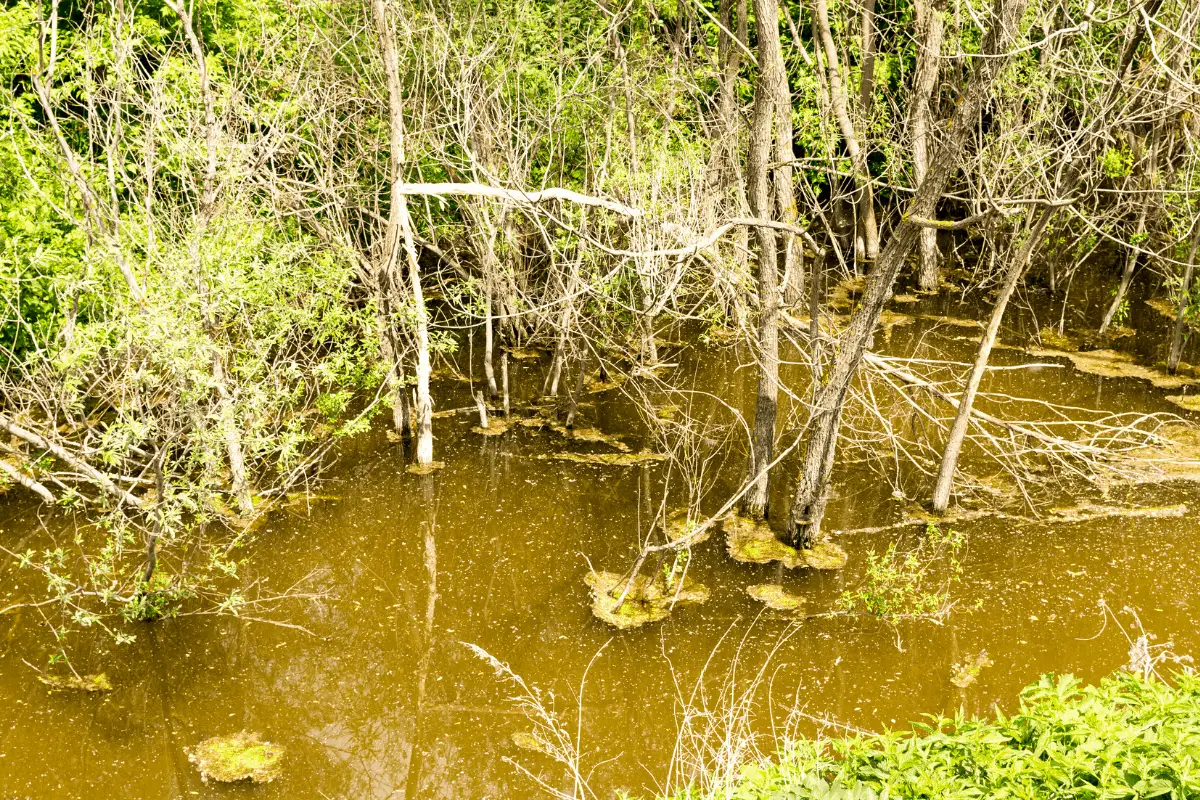Dirty water bassin’ is something that divides anglers – some love it while others hate it. Knowing the right way to approach water the color of creamed coffee can turn this seemingly awful situation into something anglers have confidence in.
To be successful in dirty, muddy water bass anglers need to fish shallow. Largemouth will be tight against cover and use it as a reference point for where they are. Accurate flips and pitches tight to the cover using jigs and Texas-rigged plastics can produce hefty dirty water bass.
In this article, I will break down the easiest way to to approach fishing dirty water.
How often is the Water Muddy?
This is the first important question bass anglers need to ask.
Does the particular body of water have a heavy stain to it all the time? Did the lake or river just see an influx of runoff and is that what created the current conditions?
Fish that live in muddy water all the time act differently than those that cruise through normally clearer water that suddenly turns to mud.
Clear water fish that are bombarded with muddy water will also move shallow, but they will do their very best to seek out clearer water. They may move into pockets and coves that are protected from the runoff and wait things out.
I have seen small pockets jam-packed with bass in this situation. The clearer water was a magnet that pulled them into such a small area.
Bass that tend to live in muddy water all the time will not be as condensed and will not always be seeking out the clear stuff. They are used to their habitat and know how to survive in a low-visibility situation.
How Shallow is too Shallow?
This always shocks me, yet it shouldn’t by now.
Dirty water bass can be very shallow – less than a foot.
There have been so many times when I think to myself, There isn’t any bass there. It is way too shallow and I can almost see the bottom in this muddy water.
I pitch a jig up there anyway and – bam! A good one takes it.
Instead of focusing on the depth of the dirty water it is more helpful to concentrate on the quality of the cover or structure that may be holding the bass.

What Type of Cover or Structure is Best?
The most consistent type of cover and structure that holds fish in muddy water is something that is hard.
Rocks, sea walls, dock pilings, and laydown trees are all excellent targets.
The bass in low-visibility use this hard cover and structure as a guide to maneuver in their dingy environment.
In systems where hard cover is absent, weeds are a close second. Vegetation also acts like a filter and some of the clearer water can be found near thick stands of grass.
Keep in mind that vegetation cannot grow without adequate sunlight and most dirty water lakes and rivers only have weeds in ultra-shallow water.
Be Thorough Once You Find Good Cover or Structure
Bass that live in dirty water locales rely on their lateral line to detect movement and possible prey.
In some cases, sight is so limited, that a bass cannot see the lure until it is only inches from them.
This means that one errant cast to a stump is usually going to come up empty. Casts need to hit the cover and slide down it.
Anglers also need to make repeated casts to high-percentage targets to maximize the opportunity to get the fish sitting their to react and bite the lure. Irritating a bass into biting is a sound strategy in dirty water. The bass are not always in an active feeding mood.
It is very similar to irritating a bedding bass to the point of picking up a lure and moving it. The same strategy applies to dirty water bassing.
Hit a good piece of cover from multiple angles. If a cast missed wide, reel it in and attempt it again.
You can Fish Close to the Cover
This may be my favorite part of fishing dark or muddy water.
Long casts from a distance are not needed. You can literally be just a few feet from the target and still catch fish. This makes casting simple, boat positioning easier, and at the end of the day – you have made many, many, more presentations which can translate to additional opportunities for bites.
It is a blast to pitch to a log only ten feet away and wrestle out a 5lb’er on heavy line.

Color Choices in Dirty Water
Many bass anglers that ply their craft in muddy water situations live with one color – black-blue.
The bass are more apt to notice a solid color. Using black is also an excellent choice. When selecting a lure to pitch into heavily stained water keep it simple. Going with a dark color is always an effective decision.
Think about something like a bluegill you see in dirty water. Rarely, can we pick out the yellows and speckles of blue. From the boat deck or shoreline, the bluegill looks like a dark shadow.
That is how your lures look to the bass as well.
I find this limiting factor very consoling. It makes my job as an angler easier because I just elimited 99% of the color choices I could mess with. In clear water, there are plenty of times when tweaking the color choice to look more natural and perfectly mimic the prey species is what can make-or-break the day of fishing.
Dirty water – dark, solid colors. Done.

Lure Choices
If the cover is sparse enough that I can use a moving lure that offers up some vibration, that is how I will start.
Bladed jigs, or Chatterbait style lures, are favorites of mine when the visibility is zero.
These lures create quite the disturbance in the water and the lateral line on the bass can easily sense the bait.
I also like to use shallow running squarebill crankbaits for the same reason.
When the bass are ignoring these moving presentations, or if the cover demands that I get right up into thick stuff like brush piles or log jams, I will switch over to a flipping jig or a Texas-rigged soft plastic.
Compact designs with bulky trailers are a go-to. Using a stout, heavy-wire hook is also key when wrestling bass out of the thick stuff.
When using soft plastics in dirty water, I prefer to keep the appendages of the plastics close to the body. Longer arms and tentacles are more likely to get hung as the lures drop through thick cover. The more compact plastic design allows for them to slide through the cover more naturally.
Line Choice
This is another huge plus when muddy water bass fishing. I can use heavy braid and not worry about the bass being too finicky. They do not see it like they do in ultra-clear water.
Anglers can pitch lures anywhere and have confidence in the fact there will be few instances where the lure is going to break off.
Braid in the 50-65lb test range is the norm, although going heavier is not unusual either.
The Positives of Dirty Water Bass Fishing
Fishing in dark, muddy water used to be something I avoided at all costs.
Then, when thinking about the positives, I realize that many of the variables are taken out of the equation and bass are easier to locate.
- The bass will be shallow. This eliminates attempting to locate deep, offshore fish.
- The color choices are limited.
- Hard cover and structure are high percentage areas.
- The bass will be tight to the cover.
- Many other anglers will avoid dirty water at all costs – leaving the fish that live there almost unpressured.
- Heavy line can be used without a leader.
- Typical power-fishing techniques work most of the time.
- Anglers can fish very close to the bass.
It’s a Mental Game
For anglers who live in areas where the water runs thick with mud, dirty water bassing is the norm.
Those of us that cut our teeth on clear water lakes and rivers can struggle with this huge mental obstacle.
I have found it best to not gaze out at the entire river or lake of chocolate soup. Focus instead on the shallow cover right in front of you.
Zoning in on small portions of the water helps to overcome the mental battle.
And I promise, once you catch a few muddy water bass, it no longer will seem as daunting as it once was.
Final Thoughts
The very best bass anglers can adapt to the conditions in front of them. Having the confidence to work through muddy water is a skill that will pay off many times over.
Probably the biggest initial factor is whether or not the water is typically clear or typically muddy.
Clear water that is overrun with mud will mean trying to locate the cleanest water possible. Those bass are not used to limited visibility.
If the water is always dirty, just pick up that flipping stick and go to work. The bass are conditioned to the mud and will sit around hard cover or structure in shallow water.
Tight lines. Be safe and make sure to go out and encourage someone today. You never know how you may change their life forever.
Isaiah 6:8

